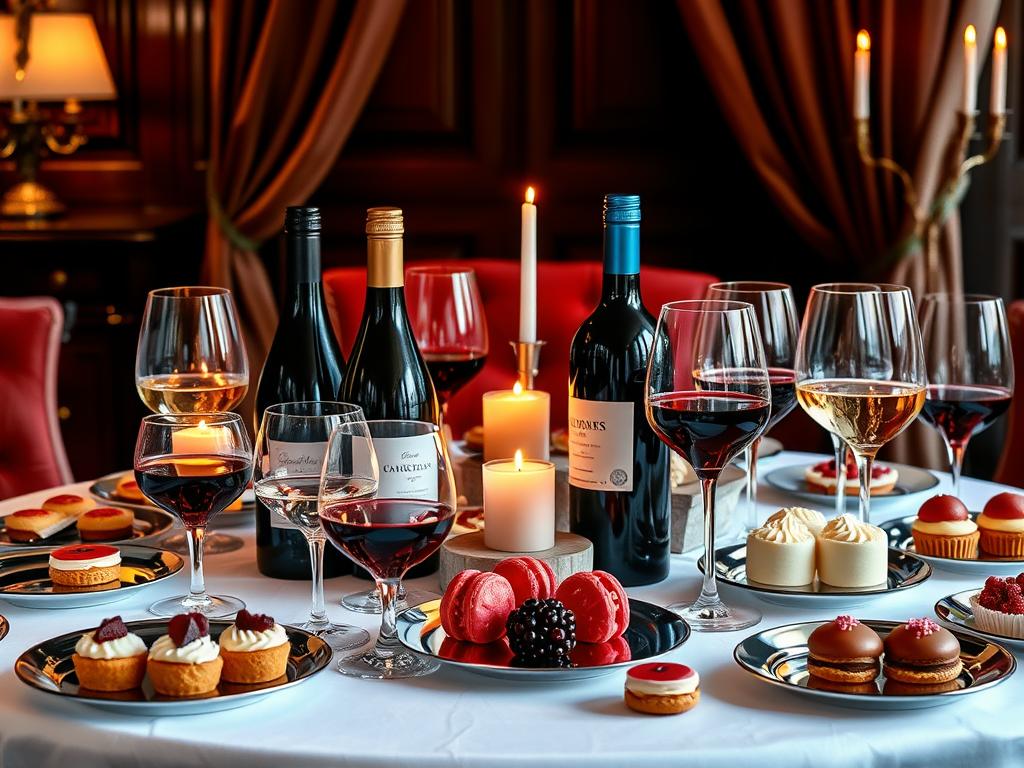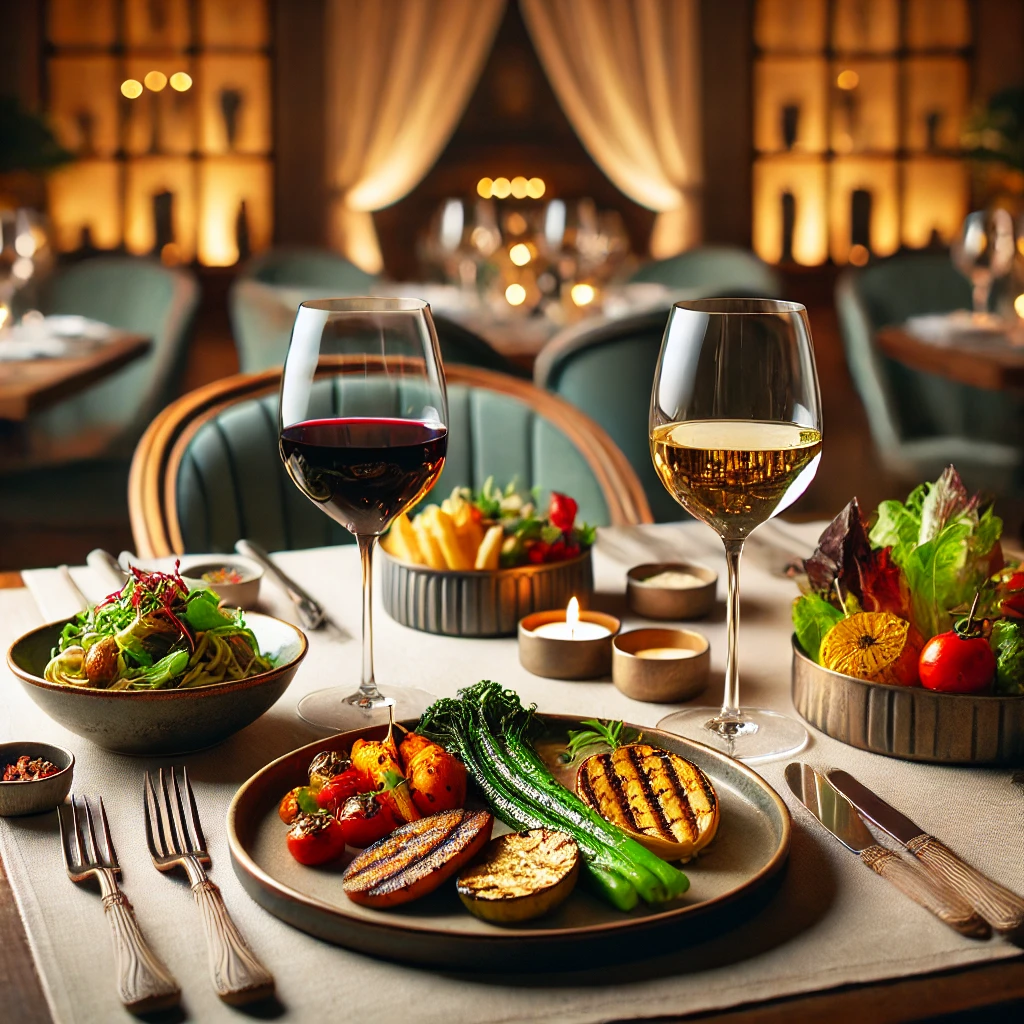Common Mistakes When Tasting Wine and How to Avoid Them
Wine tasting is a journey of exploration that involves more than just drinking a glass of wine. It’s about appreciating the nuances of each bottle, understanding its aromas, flavors, and textures, and gaining insight into the story behind the wine. However, there are common mistakes that many people make when tasting wine, which can detract from the overall experience and prevent them from fully enjoying the wine’s complexity.
In this guide, we’ll delve into the most frequent errors made during wine tasting—from handling and serving mistakes to issues with tasting technique and perception. Each section provides not only a description of the mistake but also practical tips to help you refine your wine-tasting skills. By becoming aware of these common pitfalls and learning how to avoid them, you’ll enhance your appreciation of wine, making each tasting a rewarding experience.

Mistake #1: Not Paying Attention to Temperature
The Issue: Serving wine at the wrong temperature can mask its aromas and flavors, diminishing the tasting experience. Wines served too warm can taste overly alcoholic or heavy, while wines served too cold can seem muted and dull.
How to Avoid It: Each type of wine has an ideal serving temperature that allows its flavors to shine. For example:
- Sparkling wines: 40–50°F (4–10°C)
- Light white wines and rosés: 45–50°F (7–10°C)
- Full-bodied white wines: 50–55°F (10–13°C)
- Light-bodied reds: 55–60°F (13–16°C)
- Full-bodied reds: 60–65°F (16–18°C)
Allow wine to reach the right temperature by chilling it or letting it sit out of the refrigerator as needed. Investing in a wine thermometer or a wine fridge can help you maintain optimal temperatures for different wines. Remember, temperature is one of the most controllable factors in wine tasting, so make sure to set it right for the best results.
Mistake #2: Using the Wrong Glassware
The Issue: The shape of your wine glass affects how aromas and flavors reach your senses. Using the wrong glass can interfere with your perception of the wine.
How to Avoid It: Different wine types benefit from specific glass shapes:
- White wines: Smaller, narrower glasses help preserve the cooler temperature and concentrate aromas.
- Red wines: Larger, rounder glasses allow oxygen to interact with the wine, softening tannins and enhancing aromas.
- Sparkling wines: Flutes or tulip-shaped glasses maintain bubbles and focus the wine’s effervescence.
- Fortified and dessert wines: Small glasses concentrate intense aromas and flavors, allowing for smaller sips.
While it’s not necessary to have every type of wine glass, having a few basic styles—like a larger glass for reds and a smaller one for whites—can enhance the tasting experience.
Mistake #3: Pouring Too Much Wine into the Glass
The Issue: Pouring too much wine into the glass can make it difficult to swirl the wine, limiting the release of aromas and the full appreciation of its complexity.
How to Avoid It: Stick to small pours, around 3–4 ounces (90–120 ml), which allow room in the glass for swirling. This helps release the wine’s aromas and prevents spillage. Keeping pours small also encourages you to take your time with each taste, focusing on each sip without rushing through the glass.
Mistake #4: Ignoring the Wine’s Appearance
The Issue: Many people skip observing the wine’s appearance, missing out on clues about its age, grape variety, and potential flavor profile.
How to Avoid It: Start each tasting by holding the glass up to a light source and tilting it slightly to observe the color, clarity, and opacity. Here’s what to look for:
- Color: White wines deepen in color as they age, while reds tend to become lighter and more translucent over time.
- Clarity: A clear wine often indicates quality and proper filtration, while haziness may indicate an unfiltered or aged wine.
- Viscosity: Swirling the wine can reveal its “legs” or “tears,” which can indicate alcohol content and body.
Taking a moment to observe the wine visually can help you anticipate what to expect in terms of flavor and texture.
Mistake #5: Forgetting to Swirl and Smell
The Issue: Skipping the swirling and smelling stage is one of the biggest missed opportunities in wine tasting. Smelling is essential because most of the wine’s flavor is experienced through aroma.
How to Avoid It: After observing the wine, give the glass a gentle swirl to aerate the wine and release its aromas. Bring the glass to your nose and take a deep inhale to capture the different scent layers. Try to identify any primary fruit aromas (like citrus or berries), secondary aromas from fermentation (such as bread or butter notes), and tertiary aromas from aging (like leather or tobacco). The aromas you detect will provide clues about the wine’s character and depth.
Mistake #6: Holding the Glass Incorrectly
The Issue: Holding the bowl of the glass rather than the stem can warm the wine, changing its flavor and aroma. Additionally, fingerprints on the glass can obscure the wine’s appearance.
How to Avoid It: Hold the glass by the stem rather than the bowl to prevent your hand from warming the wine. This technique also keeps the glass clean, allowing for a clear view of the wine. By holding the stem, you can swirl, observe, and smell the wine without interference.
Mistake #7: Tasting Too Quickly and Neglecting the Wine’s Finish
The Issue: Tasting wine too quickly prevents you from fully appreciating its structure, flavor evolution, and finish. Each sip is an opportunity to explore the wine’s complexity.
How to Avoid It: Take a small sip, let the wine sit on your palate for a few seconds, and then gently breathe in through your mouth before swallowing. Notice the progression of flavors from the initial taste to the finish, paying attention to how long the flavors linger. A longer finish often indicates a more complex, high-quality wine. By slowing down, you can appreciate each element of the wine more fully.
Mistake #8: Not Cleansing Your Palate
The Issue: Tasting multiple wines without cleansing your palate can cause flavors to blend together, making it hard to distinguish each wine’s unique profile.
How to Avoid It: Between tastings, cleanse your palate with neutral-tasting snacks like crackers or plain bread. Avoid heavily flavored foods, as they can leave strong aftertastes that interfere with the next wine. Water is also a helpful palate cleanser to reset your taste buds between different wines.
Mistake #9: Focusing Too Much on Finding Specific Flavors
The Issue: Some people become overly focused on identifying exact flavors, which can detract from the enjoyment of the wine and lead to frustration.
How to Avoid It: Instead of concentrating on finding specific notes, approach the wine holistically. Pay attention to its balance, body, acidity, tannins, and overall impression. Try to describe the experience rather than identifying each component. This approach helps you appreciate the wine’s complexity without getting bogged down by individual flavors.
Mistake #10: Skipping the Food Pairing
The Issue: Many people taste wine without food, missing out on the way wine and food can elevate each other’s flavors. Pairing wine with food adds a new dimension to the tasting experience.
How to Avoid It: Try pairing the wine with simple, complementary foods. For example:
- Whites like Sauvignon Blanc pair well with goat cheese or seafood.
- Reds like Cabernet Sauvignon work with red meats or hard cheeses.
- Dessert wines like Sauternes enhance the flavors of blue cheese or fruit-based desserts.
Experimenting with food pairings allows you to experience how wine can enhance a meal and how different flavors interact on the palate.
Mistake #11: Overlooking the Importance of Environment
The Issue: The environment can affect how we perceive wine. Strong scents, noise, or poor lighting can distract from the tasting experience.
How to Avoid It: Choose a clean, quiet, and well-lit space for tasting. Avoid scented candles, perfumes, or any strong smells that could interfere with the wine’s aroma. A calm environment allows you to focus fully on the wine’s characteristics without sensory distractions.
Mistake #12: Letting Preconceived Notions Affect Your Judgment
The Issue: Personal biases or expectations can color your perception of a wine, making it harder to evaluate objectively.
How to Avoid It: Approach each wine with an open mind, regardless of brand, price, or grape variety. Focus on your own experience rather than external opinions. Every wine has its unique qualities, and by tasting with an open mind, you may discover something new and unexpected.
Mistake #13: Not Taking Notes or Recording Impressions
The Issue: Forgetting to take notes can make it hard to remember your impressions of different wines, making it difficult to track your preferences and experiences over time.
How to Avoid It: Keep a wine journal or use a wine app to record your impressions. Note details like the wine’s appearance, aroma, flavor, and finish, as well as any food pairings you tried. This practice not only helps you remember your favorites but also sharpens your tasting skills, allowing you to track how your palate develops over time.
Tasting Wine with Mindfulness and Appreciation
Wine tasting is an art that requires attention, patience, and an open mind. By avoiding common mistakes, you can heighten your sensory experience and truly appreciate the complexities each wine offers. From paying attention to temperature and glassware to savoring each sip, these small adjustments can transform the way you taste and enjoy wine.
The more mindful you are during tasting, the more you’ll discover the rich layers of aroma, flavor, and texture that wine has to offer. This approach helps you not only understand each wine’s unique profile but also connect with the winemaking craft that created it. Over time, as you refine your tasting habits and become more attuned to subtle differences, your enjoyment and appreciation of wine will deepen.
Ultimately, wine tasting is about exploration and enjoyment. By learning to avoid common mistakes and embracing a mindful approach, you allow yourself to fully experience each bottle, making every tasting a memorable journey. So raise a glass, take your time, and enjoy the nuances that make wine such a fascinating and delightful part of life.
FAQ
Why is using the right glassware important for wine tasting?
The right glassware can greatly impact the wine’s aroma and flavor. It helps bring out the wine’s best qualities, making the tasting experience more enjoyable.
How can observing the appearance of the wine provide insights into its quality?
Looking at the wine’s color, clarity, and other visual qualities can tell you a lot. It can show you the wine’s age, grape variety, and condition. This step is key in the wine tasting process.
Why is it important to focus on the aroma and bouquet of the wine?
The wine’s aroma and bouquet can reveal a lot about its character. They can tell you about the grape varietals and winemaking techniques used. Examining the scent can greatly enhance your tasting experience.







One Comment